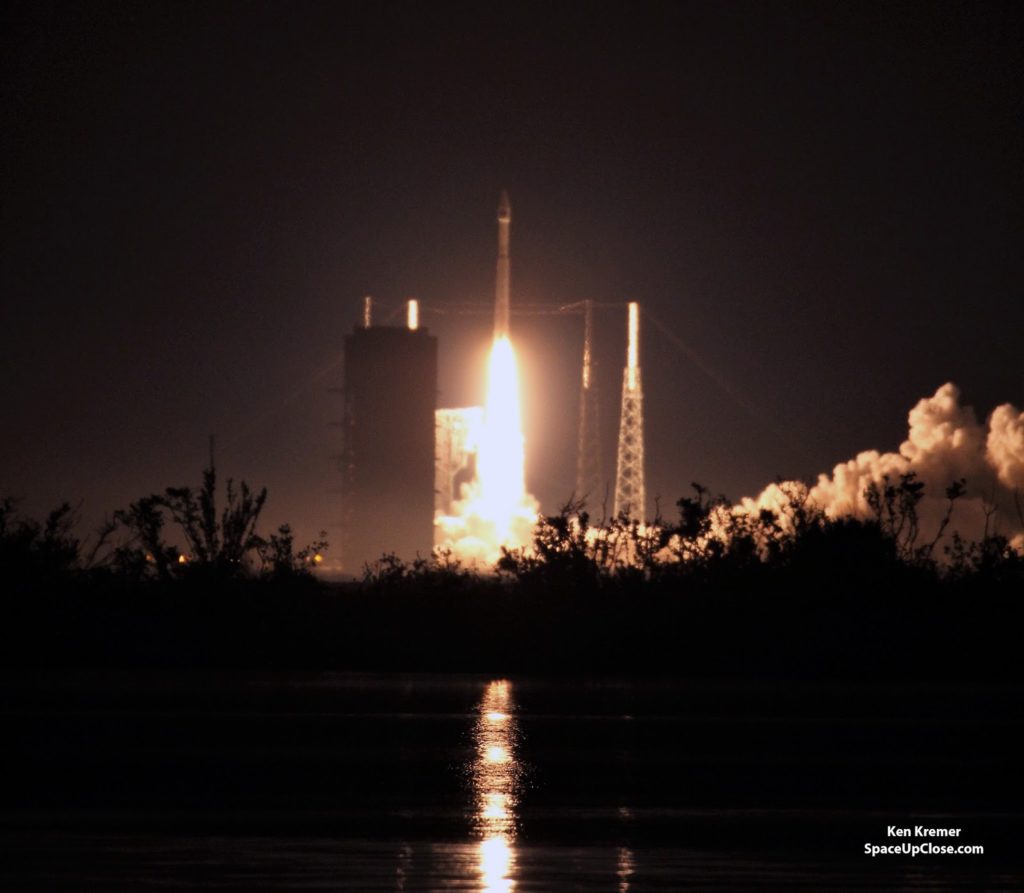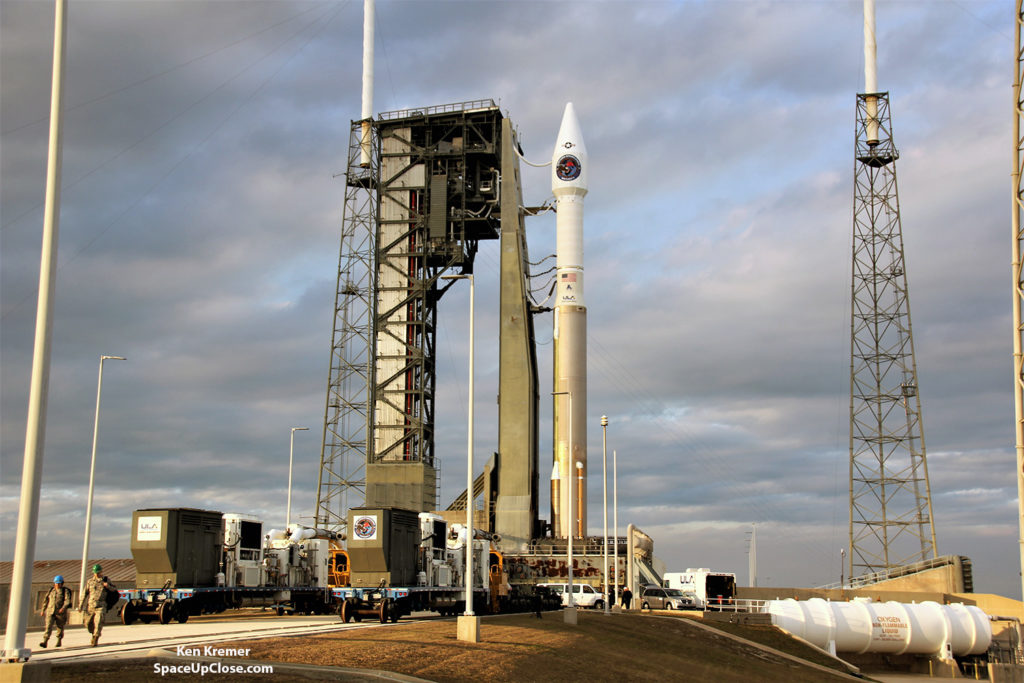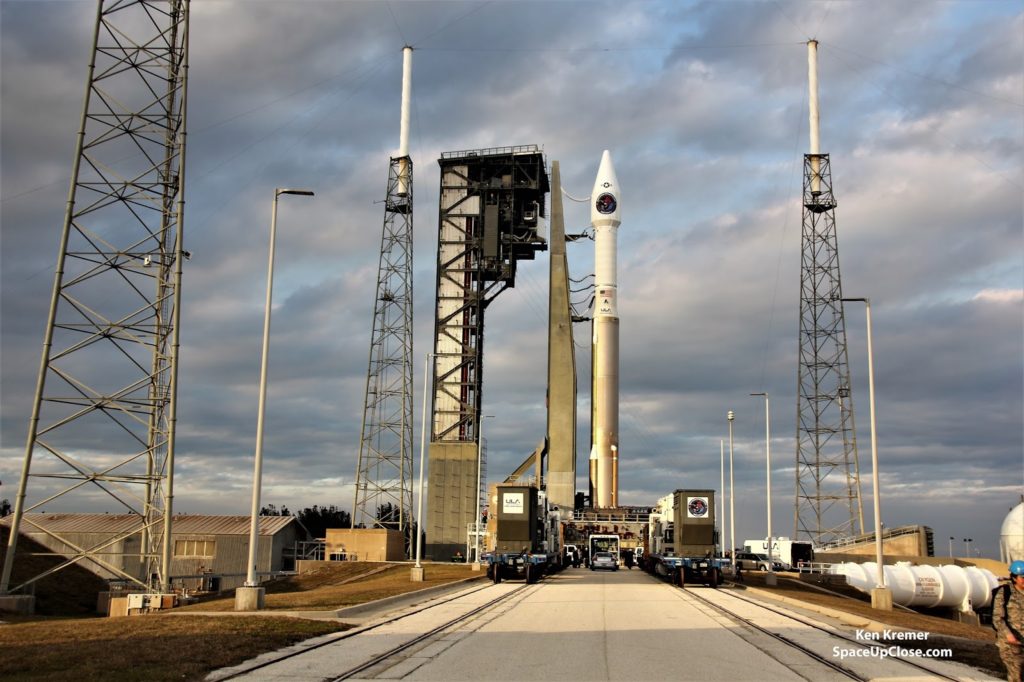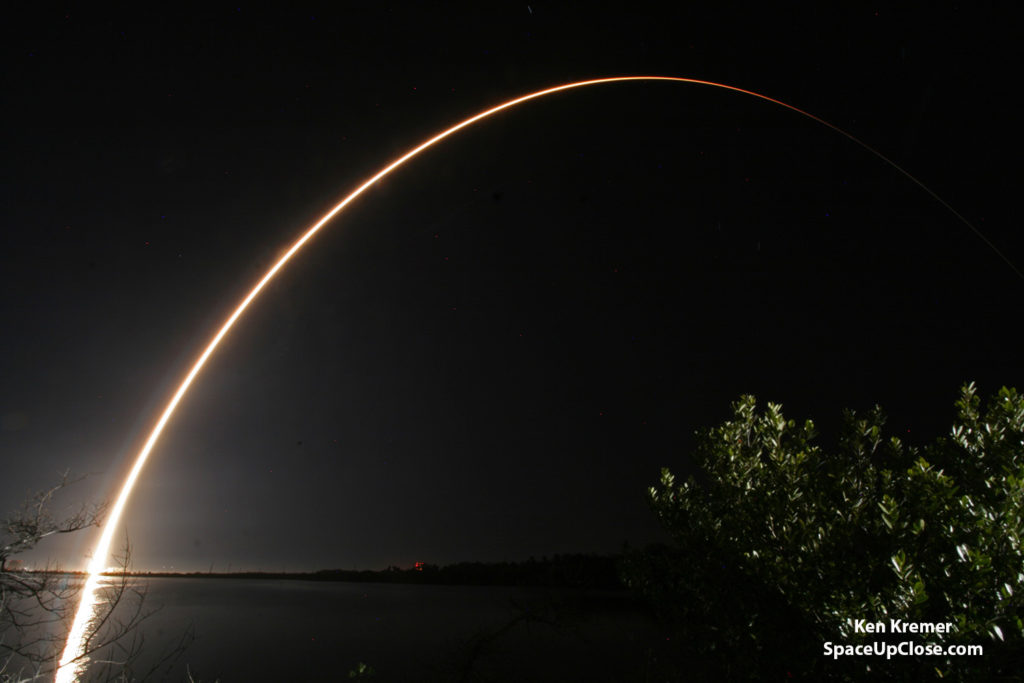 |
|
The ULA Atlas V rocket launched the U.S. Air Force SBIRS
GEO Flight 4 mission on Jan. 19, 2018 from Space Launch Complex-41 on Cape Canaveral Air Force Station, Fla., and successfully delivered the infrared missile tracking satellite to orbit. Credit: Ken Kremer/SpaceUpClose.com |
Kremer — SpaceUpClose.com — 20
Jan 2018
V rocket successfully launched the SBIRS Geo Flight 4 infrared surveillance and
missile attack detection satellite for the U.S.
Air Force Friday evening Jan. 19 at 7:48 p.m. EST, from seaside Space Launch Complex-41 at Cape Canaveral Air Force
Station in Florida by rocket provider United Launch Alliance (ULA).
Florida Space Coast took place just in the nick of time, coming barely 3 hours prior to the U.S. Government shutdown due to
the lack of an agreed budget by DC politicians.
highlights for
the Atlas V SBIRS GEO Flight 4 launch compiled
by United Launch Alliance – showing
the rocket rollout, countdown and launch activities.
Caption: Atlas V SBIRS GEO Flight 4 Launch Highlights. A
United Launch Alliance (ULA) Atlas V rocket carrying the SBIRS GEO Flight 4
mission lifts off from Space Launch Complex-41.
Credit: ULA
issue with a faulty ground hardware valve with the first stage boosters liquid
oxygen system.
infrared signatures and deliver early warning of incoming enemy ballistic missiles attacking
the US and its allies.
latest satellite to join the Air Force’s orbiting missile warning constellation
equipped with powerful scanning and staring infrared surveillance sensors. The
sensors collect data for use by the U.S. military to detect missile launches,
support ballistic missile defense, expand technical intelligence gathering and
bolster situational awareness on the battlefield. The satellite also completes
the initial constellation and allows SBIRS to provide global coverage,” said satellite
builder Lockheed Martin.
stories.
for Ken’s continuing onsite coverage of Falcon Heavy, ULA and NASA and space mission reports direct
from the Kennedy Space Center and Cape Canaveral Air Force Station, Florida.
Earth and Planetary science and human spaceflight news: www.kenkremer.com – www.spaceupclose.com
– twitter @ken_kremer
 |
|
A ULA Atlas V rocket carrying the SBIRS
GEO Flight 4 mission to geosynchronous orbit for the U.S. Air Force was rolled from the Vertical Integration Facility to the launch pad at Space Launch Complex-41 on Cape Canaveral Air Force Station, Fla., on Jan. 17, 2018. The Atlas V lifted off successfully on Jan. 19, 2018 and successfully delivered the infrared missile tracking satellite to orbit. Credit: Ken Kremer/SpaceUpClose.com |
 |
|
A ULA Atlas V rocket carrying the SBIRS
GEO Flight 4 mission to geosynchronous orbit for the U.S. Air Force was rolled from the Vertical Integration Facility to the launch pad at Space Launch Complex-41 on Cape Canaveral Air Force Station, Fla., on Jan. 17, 2018. The Atlas V lifted off successfully on Jan. 19, 2018 and successfully delivered the infrared missile tracking satellite to orbit. Credit: Ken Kremer/SpaceUpClose.com |


